Blank walls drag down even the best rooms. Your space deserves better than empty white rectangles staring back at you. Modern wall decor turns those blank spots into the most interesting parts of your home. No renovation needed.
Just one striking piece can change how a room feels. The right wall decor creates focus, adds personality, and makes your space look intentional rather than accidental.
Most people stare at blank walls for months (sometimes years) before doing anything about them. They get stuck deciding what would look good or worry about making holes. Meanwhile, that empty space keeps making rooms feel unfinished.
The good news? Wall decor delivers the biggest visual impact for the least effort. Easier than painting. Way easier than new furniture. And you can change it when you get bored.
Ready to transform your home? Here are six approaches that work every time.
Quick Tips Worth Saving
- Geometric shapes create instant modern art vibes without trying too hard
- Textured art adds depth that flat prints can’t match
- Asymmetrical arrangements look more natural and less staged
- Mixed materials tell a better story than matching everything
- Frameless art keeps the focus on the image, not the border
- Strategic mirror placement doubles light and makes spaces feel larger
Save these for your next decorating project or share with friends stuck with boring walls.
Geometric Patterns That Pull Rooms Together
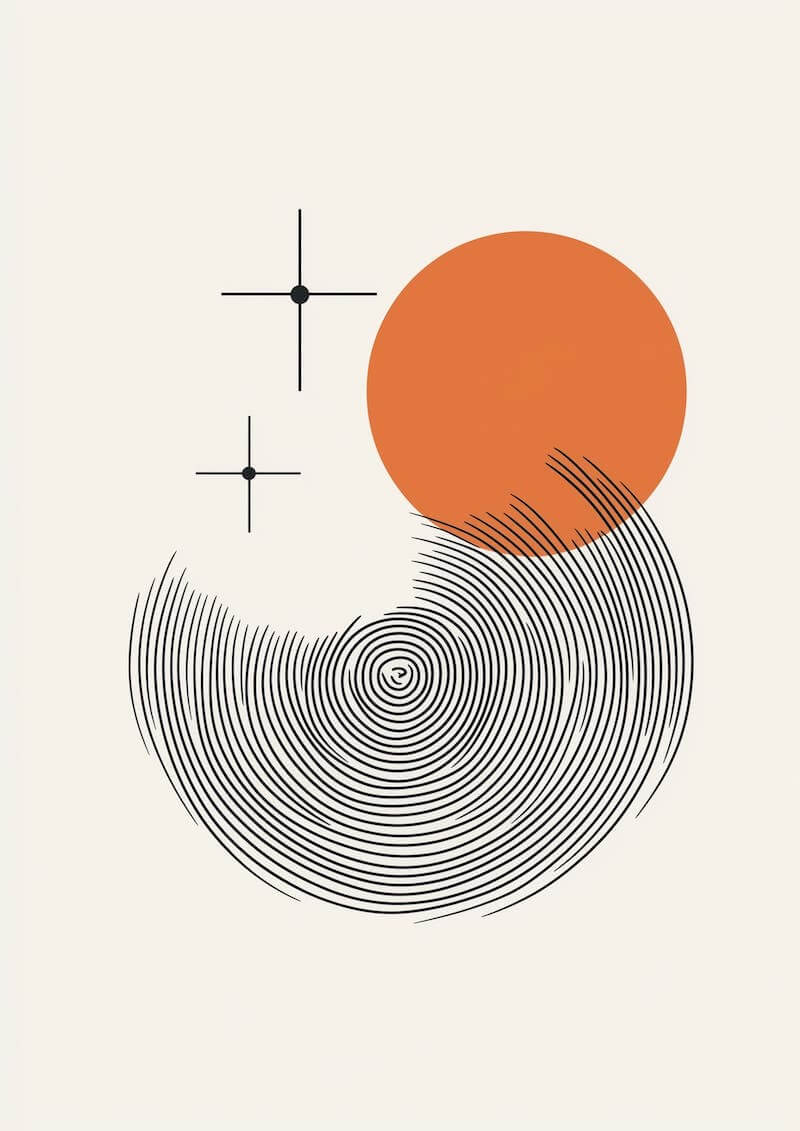
Something about clean lines and deliberate shapes just screams “modern.” Geometric patterns bring order to chaos without looking rigid or cold.
A large hexagonal print anchors a living room instantly. Triangle patterns create movement that draws you through a space. Even simple circles arranged thoughtfully transform a hallway from forgettable to fascinating.
What makes geometric patterns work so well? They feel intentional. Random decor makes spaces look collected without purpose. Geometric elements signal thought and planning.
Metal geometric wall art does double duty. The shapes create structure while the material interacts with light throughout the day. Your wall art essentially changes as the sun moves, giving you different looks morning to evening without lifting a finger.
Common mistake? Picking pieces too small for your wall. Geometric art needs size to make its statement. A tiny triangle on a large wall gets lost. An oversized hexagon pattern makes the same wall look designer-curated.
For best results:
- Go big in main living spaces. Small geometric pieces get lost on large walls.
- Match colors to what you already have or go boldly opposite for contrast.
- Keep patterns simple in busy rooms. Complex designs work better in more minimal spaces.
- Group small geometric pieces together in hallways or home offices for more impact.
Textured Art That Begs to Be Touched
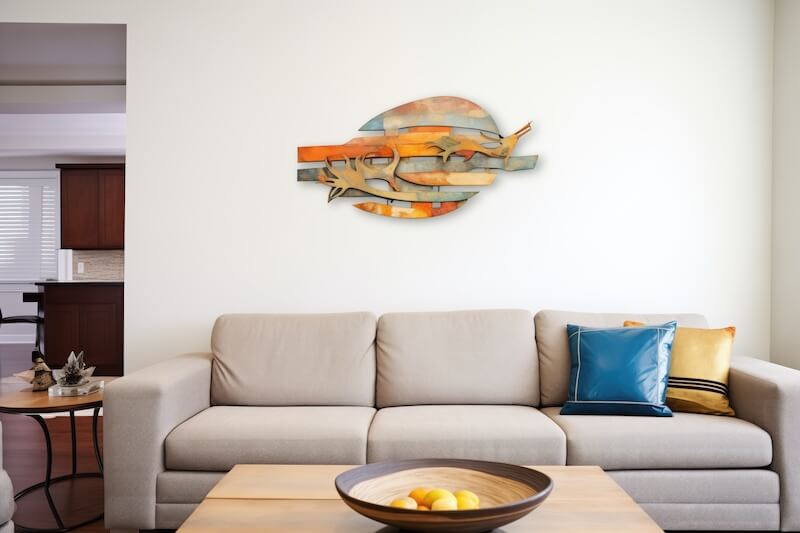
Flat art has its place. But textured pieces add depth that transforms how a room feels. Light creates shadows across the surface that shift throughout the day, making the art feel alive rather than static.
Popular textured options that make an impact:
- Carved wood panels bring natural warmth with grain patterns that work with any style
- Canvas with built-up paint creates peaks and valleys that turn flat images into sculptural pieces
- Textile wall hangings like macramé add soft texture that balances harder surfaces
- Metal wall sculptures combine smooth and textured finishes for eye-catching contrast
- Paper art with layered elements creates delicate dimensional effects
These pieces work best when their colors complement your room while the texture provides the contrast. The mix of smooth walls with tactile art creates tension that makes spaces more interesting.
Asymmetrical Arrangements That Feel More Natural
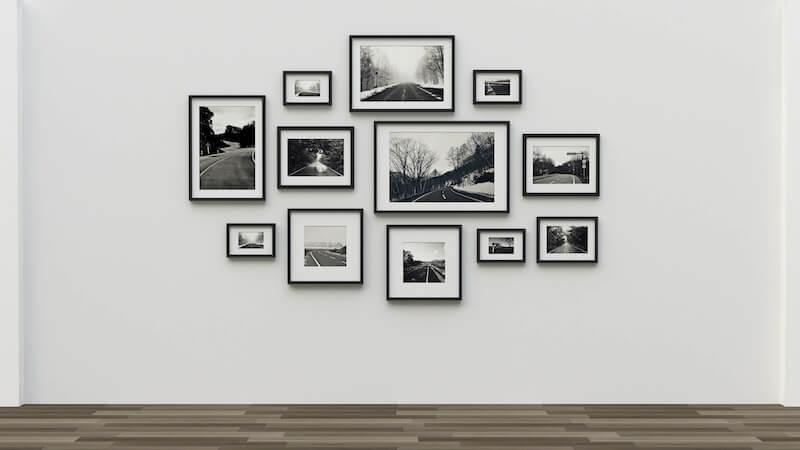
Perfect symmetry looks staged. Asymmetrical designs feel collected over time, not bought all at once to match the sofa.
Start with one standout piece positioned slightly off-center. Then add smaller pieces around it, varying both size and style. This creates a gallery with visual movement that draws your eye across the entire wall rather than just to the center.
Try this simple approach for a foolproof gallery wall:
- Place your largest piece about 1/3 of the way across your wall, slightly above center
- Add medium pieces at varying distances around it
- Fill spaces with smaller pieces, leaving some breathing room
- Step back frequently to check the balance feels right, not perfect
The beauty? You can easily add new pieces later without ruining the arrangement. Perfect for growing collections or changing tastes.
Asymmetrical doesn’t mean random. The pieces should still relate through color, theme, or style. Think “balanced but not mirror images” rather than “everything thrown up randomly.”
The most common mistake with gallery walls? Crowding too many pieces together. Empty space between items lets each piece stand out rather than becoming visual noise.
This approach works particularly well above sofas, in dining rooms, or along staircases where the wall space itself has interesting dimensions.
Mixed Materials That Create Depth
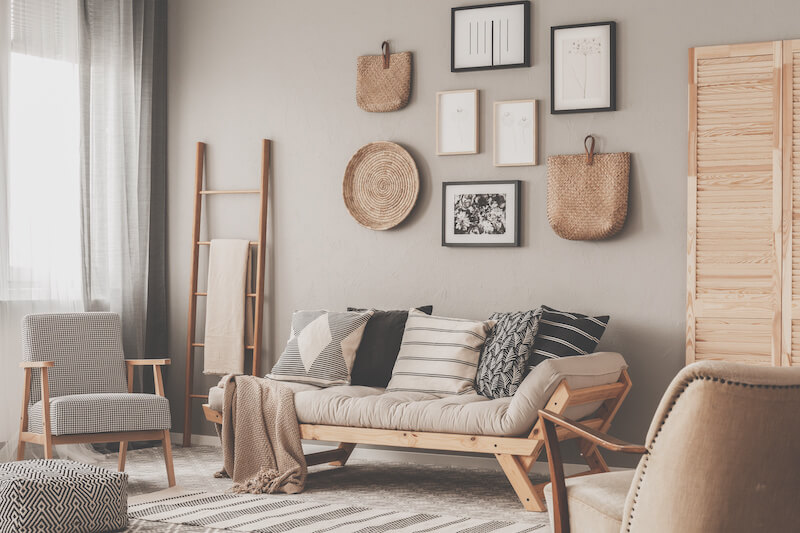
The most interesting walls combine different textures speaking the same design language. Metal, wood, canvas, and textiles together create visual stories that unfold as you look closer.
A sleek metal sculpture next to a rough wooden panel creates immediate contrast. Add a canvas print for color and a small textile piece for softness, and you’ve created a complete sensory experience on your wall. Add houseplants, even, so you’ll interact with it daily.
For a cohesive mixed-media wall:
- Choose a theme first—color palette, subject matter, or style that connects everything
- Mix flat art with pieces that project from the wall for varied depth
- Balance heavy pieces with lighter ones for visual weight distribution
- Position elements so they relate to each other, creating conversation between pieces
- Leave breathing room between items so each can be appreciated individually
The result looks curated rather than chaotic, with each piece contributing to a greater whole.
Frameless Art That Looks More Modern

Notice how galleries and high-end spaces often display art without frames? This creates a cleaner, more contemporary look that lets the art speak for itself.
Stretched canvas prints exemplify this approach. The image wraps around the edges, creating a seamless look from any angle. Without frames interrupting the view, the artwork becomes part of your architecture rather than something added to it.
Frameless art works particularly well in spaces with strong architectural elements or minimal design. The simpler presentation reduces visual clutter and lets architectural details shine.
Another advantage? Frameless pieces typically cost less than framed art. The money you save can go toward larger statement pieces or more pieces for a gallery wall.
Oversized frameless pieces make powerful statements in living rooms, above beds, or in dining areas. The clean edges and large scale create focal points that define the entire room.
For smaller spaces, a series of related frameless pieces creates rhythm without overwhelming the area. Three abstract canvases in complementary colors can transform a narrow hallway or small office.
This approach pairs perfectly with minimal, contemporary spaces but also creates interesting contrast in more traditional rooms.
Mirrors That Do More Than Reflect
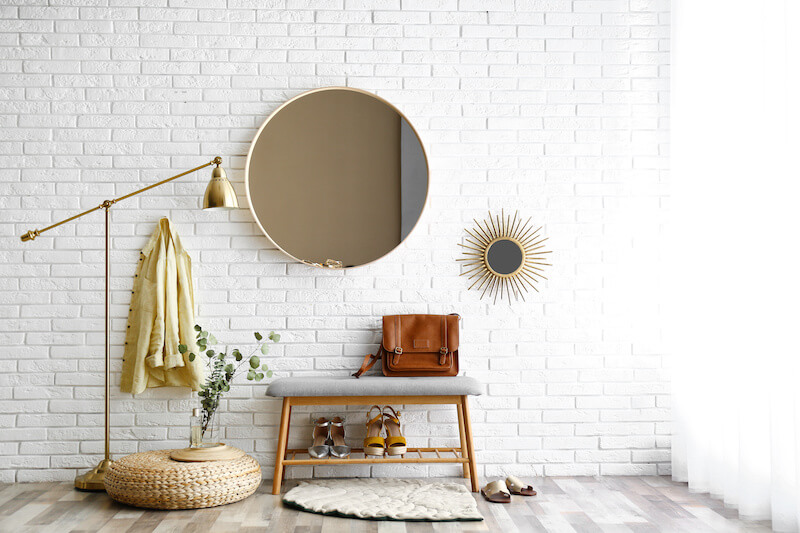
Mirrors pull double duty. They make spaces feel bigger and brighter while serving as decorative elements themselves.
A collection of circular mirrors in varying sizes creates an orbital effect that feels both organic and structured. Geometric mirror panels arranged in patterns bring both light and visual interest to darker corners.
The magic of mirrors happens when you place them strategically. They literally double your visual space by reflecting what’s across from them. A mirror across from a window doesn’t just reflect light—it creates another “window” visually, making the room feel twice as open.
Decorative mirrors in entryways are great. They show off your style as soon as guests walk in. They make small entryways look bigger. They let you check your outfit on the way out the door. Win-win-win.
Afraid of looking too “funhouse”? Mix mirrors with other wall decor for a more curated look. A mirror flanked by two art pieces above a console creates an instantly pulled-together vignette.
For maximum impact, place mirrors:
- Opposite windows to capture and bounce natural light deeper into rooms
- Adjacent to art pieces to reflect and visually extend your collection
- At the end of hallways to expand narrow spaces and brighten dark corridors
- Above furniture to add height and dimension to seating areas
Mirrors with smoky or bronze tints add depth beyond simple reflection. Etched patterns or textured surfaces create interest while still providing the light-enhancing benefits mirrors bring to any space.
Transform Your Walls, Transform Your Space
Your walls aren’t just for keeping the roof up. They’re your biggest opportunity to transform how a room feels without moving furniture or painting.
Start with one statement modern home decor piece that captures your style. Build around it slowly, considering how light hits the area at different times of day.
Quick tips for getting started:
- Take photos of your space before shopping to keep proportions in mind
- Use removable hanging solutions while you experiment with placement
- Try different arrangements on the floor before putting holes in your wall
- Start with neutral colors if you’re unsure, then add bolder pieces later
- Consider scale carefully—too small looks accidental, too large feels overwhelming
Art looks different in your home than in a store or online. Give yourself permission to adjust until it feels right.
Your walls should reflect your life, interests, and personality. Whether through bold geometrics, natural textures, thoughtful asymmetry, mixed materials, clean frameless presentations, or strategic mirrors, modern wall decor transforms boring spaces into rooms worth showing off.
What story will your walls tell?




